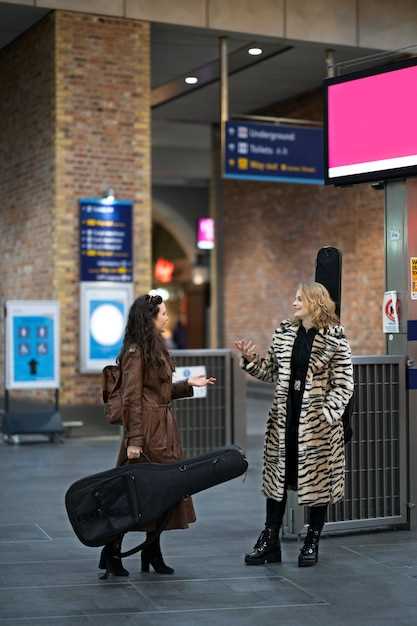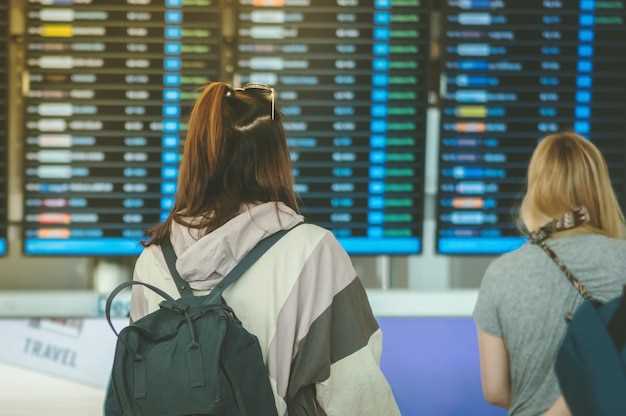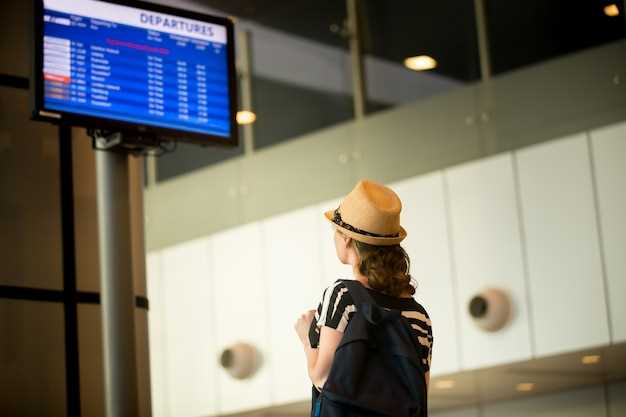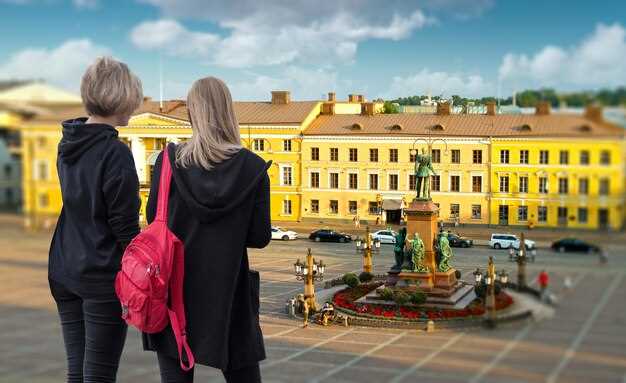Plan to arrive here with a buffer: for domestic departures, allow 2 hours; for international departures, 3 hours. This helps you move through service desks, machines for check-in, and security without rushing. just follow these steps for a smoother start for travelers.
SVO sits about 29 kilometers northwest of central Moscow, a practical location that keeps the airport accessible by major roads. Distances to the city center translate into travel times that are average, with spikes during rush hours and seasonal traffic.
Multiple terminals serve civil aviation at SVO, with clear signage and dedicated queues for international and domestic departure gates. Always confirm the information on your boarding pass, and rely on news boards for any terminal changes. For legitimate operations, look for official counters and avoid unofficial desks at busy hours.
For fast city access, take the Aeroexpress train to Belorussky station; travel time is typically 35–40 minutes. In addition, regional buses and taxis connect all terminals; ride-hailing apps are common, with clear meters and transparent pricing. If you drive, allow extra time for parking and the distances to the terminal blocks. For travelers, just use official information counters at arrivals to verify schedules; here you can get the news on updates and when the next departures occur. palernaya area in the terminal cluster offers quiet seating and charging stations, if you need a quick rest before the next flight.
For planning future trips, review official news 和 marketing materials that illustrate terminal services and information on baggage handling. The SVO complex continues upgrading self-service machines and check-in kiosks to shorten departure times, a win for travelers seeking efficiency. here you’ll find practical tips, current facilities, and a reliable location map to navigate distances between terminals with confidence.
Practical guide for travelers navigating SVO’s flights, terminals, and transport
Before you travel, confirm your SVO terminal and transfer options. The belorussky Aeroexpress is the fastest-growing city-to-airport link, with trains every 20–30 minutes and a 35–45 minute ride; buy tickets at the belorussky agency desks or online. In peak hours expect congestion near the rail hall; arrive 90 minutes before international flights and use the official flight status server for updates. It does deliver a quick, predictable transfer, especially if you are catching a morning or evening flight.
Each terminal groups functions: check-in zones, security lanes, and gates are organized by hall. Notice boards show flight numbers and airline names in multiple languages; follow arrows to the transfer desks if you have a tight connection. The busiest hall normally handles international traffic; if you know your connection time, use the transfer counters with shorter lines and consult the terminal maps.
At SVO you find various dining options, from fast food to sit-down restaurants. Plan around the queuing times: in busy periods, lines form before the food courts; if your wants include sharing plates, look for larger tables and family-style outlets. The food courts also post allergen notices and offer menus in English.
Free Wi-Fi is available; connect through the login page and accept cookies to speed up sign-in. The airport server provides real-time intelligence on departures and arrivals; you can customize alerts to your gate and transfer time. Watch notice boards for gates and boarding times and keep a comfortable buffer between connections.
Shopping and services include mail counters and passenger assistance: visit a staff agency or information desk to get directions, maps, or help with special requests. If you want to ship a parcel, contact the courier agency located in the arrivals area. Service desks are near transfer hubs and at each terminal building for quick help. Ask for the list of available services at the information desk.
Travel with hand luggage? Keep essentials accessible and use available luggage carts at the entrances. If you travel by bike, use designated bike parking near main entrances and follow security guidelines. Once you build a plan for your stay, you can move quickly between transfer points and minimize the risk of missed flights.
Belorussky station is connected by Aeroexpress; consider taxi or ride-hailing options if you prefer door-to-door service. The signs in the busy hall list terminal names and service desks to aid quick routing. For travellers looking for quick reads, the articles in the information corner offer practical tips and maps. Public art in the terminals even includes lines by a local poet to brighten your wait.
Which terminals handle international vs. domestic flights and how to transfer between them
International flights operate from terminal B; domestic flights are concentrated in terminals C and D. The difference between international and domestic flows is clear from signage and the terminal layout. Confirm your terminal on the boarding pass, the airline site, or the SVO info server, and view the airport map on google to see the exact line and connections. If you arrive by rail from belorussky or kursky stations, take the aeroexpress to SVO, then follow signs to the terminal that hosts your next leg. Passengers from ukraine or other regional origins follow the same flow, with bilingual signs to guide you.
Transfer between terminals: rely on clearly marked transfer routes inside the airport. If you need to switch from terminal B to C or D, follow the second level corridors or ground-floor paths to the transfer point. Look for lines labeled Transfer or Connecting flights and ask at the info desk if you’re unsure. The system supports a quick move, and staff can guide you to the exit that leads to the correct terminal.
Terminal-by-terminal guidance: If your international leg arrives at terminal B and your next flight departs from terminal C or D, use the transfer facility to reach the domestic terminal for check-in. In most cases you stay within the airport complex; you won’t need to exit to the street. If you must clear immigration or re-check baggage, complete that step at the transfer point before proceeding to the next flight.
Practical tips: arrive early to account for terminal changes; carry card or cash for payments at cashier counters or shops. Power outlets and seats are available in both terminals; you can book seats online to save time. Bring accessories such as chargers or adapters; some lounges offer free videos to help you relax. For up-to-date details, rely on the info desk, the google map, or the SVO server. If you have a fire emergency, follow the exit signs to the nearest exit. Where to go next? The terminal map shows you the line to the exit, the facility layout, and the point where you can collect your bags or re-check. Enjoy the journey.
How to read SVO’s flight boards: codes, times, gate info, and status updates
Check the departures board 30–45 minutes before your flight and cross‑check with the official websites or the SVO magazine to meet the latest changes. In busy periods, follow the sign and the linesheremetvo- cues to stay aligned with your gate and boarding group.
CODES AND FLIGHT NUMBERS: Each row shows the airline two‑letter code, the flight number, and the destination. For example, rossiya flights commonly appear with SU plus the number (SU 1234). The board may also spell out the airline name, especially on larger displays in the centre of the terminal.
TIMES: Look at the scheduled time and the live estimate. All times reflect Moscow local time. If a delay occurs, the board updates tracking every few minutes, and you’ll see a new estimated departure appear to back up your plans. This helps you adjust without running around the centre in a panic.
GATES: Gate numbers appear to the right of each flight row. If the gate is not yet assigned, you’ll see “GATE TBD” or a sign indicating a change. Once a gate is announced, the status line and an adjacent sign guide you to where boarding begins, reducing back‑and‑forth across the terminal.
STATUS UPDATES: Look for labels such as ON TIME, DEPARTED, ARRIVED, BOARDING, DELAYED, and CANCELLED. Colors help fast scanning–green for on time, orange for boarding, red for delays. If you’re connecting, sharing updates with companions via your phone or a quick printout can keep your journey smooth and predictable.
ADDITIONAL TIPS: Use multiple sources–the airport’s official websites, the social channels, and on‑site displays–to provide a complete picture. The location boards exist in several locations and, along with lounges, help you plan around sleep zones, restaurants, and other services. Growth in passenger numbers has led to more boards and faster updates, and monthsthe timetable grid refreshes during standard maintenance windows so everyone sees current information across linesheremetvo- zones.
BIKES, BUSES, AND BEYOND: If you arrive by bike or plan transfers to buses or trains, follow the transport indicators near each board. Maps show the locations of transfer buses and pickup points, while the centre concourse offers a quick reference to restaurant options and transfer routes. The domain of real‑time updates covers these routes, so you can track your connection without missing a beat.
FINAL POINTERS: For quick confirmation, pair the board reading with a quick check of trusted websites and the saraogi sponsor sign where available. This practice helps you meet your flight on time, reduces stress, and keeps your travel party informed as you move through the airport’s vibrant spaces.
Where to check in, drop bags, and pass security quickly
Check in online with your carrier at least 24 hours before departure and use the bag drop on the ground level to save time. Bring your passport, boarding pass, and any required visas; have documents ready to scan at once.
- Find the correct check‑in area on the ground floor by your carrier’s desk; if you already have a mobile boarding pass, use self‑service kiosks to print a boarding pass and tag your bag.
- For bags, go to the bag drop counters labeled by terminal section; selected desks serve both domestic and international routes, different carriers may have separate lanes; line‑signs guide you to the right station and keep the queue moving.
- Keep power needs in mind: use charging stations near the desks to top up devices while you wait.
- Know nearby lounges: if you have lounge access, consider dropping bags first and then heading to security; lounges serve as a calm space in summer or any season.
- Family with baby: use nearby family counters or dedicated lanes; bring baby gear through security and keep strollers simple.
Security quick pass tips: join the selected fast‑track lanes if available, observe posted times, and prepare for scanning by removing belts, watches, and large electronics; have your boarding pass and passport ready and post them on the reader when asked.
- Place all liquids in a clear bag and place electronics in separate bins; this improves efficiency and reduces waiting.
- Keep your personal items organized and avoid crowding; staff at the ground station will direct you to the correct lane.
- If you don’t speak Russian, rely on English signage and staff; clear directions speed up the process and minimize confusion.
- Normal crowds peak in the morning and early afternoon; plan for extra time or use line‑signs that indicate the shortest queue.
Post‑security and ground support: once through security, review your boarding pass on the screen, then proceed to nearby gates or lounges; you can watch videos in the terminal that explain directions and services.
Notes: SVO offers a ground station area with charging outlets and nearby local services; carry your power bank and keep essential items in easy reach; this is how you make your flow smooth and keep the line moving.
poet tip: a quiet moment in the line‑queues can feel like a short poem about rhythm and efficiency, guided by directing staff and serving agents who keep things moving.
Ground transport options to and from SVO: Aeroexpress, metro, buses, taxis, and car rental
Take Aeroexpress to Belorusskaya for the fastest city-center transfer. Trains run roughly every 30 minutes and the ride takes about 35–40 minutes. Tickets are available at the cashier desks in the arrivals area or at self-service machines; follow the signs to the Aeroexpress platform. This option brought a direct link from SVO to central Moscow and remains a reliable source for onward travel. The history of Moscow airport transport shows marketing has long highlighted Aeroexpress as the fastest link, and these services comprise the backbone of ground access. If you’re continuing by train to another city, such as Nizhny Novgorod, you can easily connect from Belorussky; the service is designed to be straightforward for travelers with luggage, and seating is comfortable for longer journeys. The terminal area around the platforms offers free wifi and quiet corners where you can rest, sleep a little, or plan your exploration of the city.
From Belorusskaya, the Metro network links you to central Moscow in minutes; a single fare or a Troika card covers most trips. Signs across stations are multilingual, making it easy for foreign travelers to navigate. The Metro is linked to the Aeroexpress line, so you can switch quickly between the airport connection and the city core. Tickets are straightforward at windows or vending machines, and you can add funds to a Troika card at the cashier or online. This part of the guide relies on simple forms of payment and clear signposting, ensuring easy access to the next leg of your journey.
Buses offer a cheaper option for direct access to main hubs and suburban districts. Official airport bus routes run to central districts and rail hubs, with travel times shaped by traffic and typically ranging from 60 to 90 minutes. Tickets are available at on-site kiosks or from the driver, and fares are affordable with payment by cash or card. English-language signs help these travelers accessing the stops. Buses bring you into the city without parking concerns, and you can transfer to the metro for further exploration of sights and neighborhoods.
Taxis stand by in the arrivals area; use the official desk or a clearly marked kiosk to obtain a fixed-rate voucher or to confirm the fare before departure. Typical fares to central districts run around 2,000–3,500 rubles, higher at night or in peak traffic. Cards are widely accepted, and you’ll receive a receipt after the ride. If you prefer a prepaid option, ask at the desk in the terminal. For safety and predictability, avoid unofficial taxis and pick a marked line with a visible license sign.
Car rental desks are located in the arrivals area; you’ll need a valid driver’s license and a major credit card, with a potential deposit. Daily rates generally start around 2,500–3,500 rubles, plus extra charges for GPS, insurance, or additional drivers. Renting gives you the flexibility to reach the Nizhny region or other outskirts on your schedule and to tailor day trips around Moscow. In the terminal, foreign stores and SIM vendors help you stay connected, and rental staff can provide a map or route suggestions to start your journey. Receiving keys quickly allows you to head out via the main exits and begin your exploration with confidence.
These options are part of a practical network designed to accommodate different budgets and plans. Signs guide you from the arrivals area to the transport hubs, and forms or documentation vary by service (ID for rental, payment methods for taxis or buses). The airport offers free wifi, quiet seating in lounges, and sleep-friendly corners near the transit points, making it easy to wait for your ride. For travelers, this grounded system sends you smoothly from airside to the city or back to the terminal when needed, ensuring a reliable, flexible approach to accessing Moscow from SVO.
2018–2019 name-change: signage, tickets, and documents – what travelers should know
Verify your ticket details align with the updated branding implemented in 2018–2019 before you travel. Check names, flight numbers, and destinations on your e-ticket and boarding pass to avoid delays at desks or checkpoints.
Signage updates cover large terminals and at information desks, presenting Cyrillic and Latin spellings side by side. You will see extensive displays along corridors that guide you through the transfer sequence. Information desks and staff help you navigate the routes and entry points in the main halls.
Tickets and documents issued after the change reflect the new naming. If your document still uses the old branding, visit a desk to reprint or update. Carry a backup copy of the previous name if possible. Price options appear on the ticketing system and baggage limits remain unchanged. The ticketing systems were expanded to accelerate check-in and gate processing, and the airport briefing notes this gradual rollout across the main halls and service areas.
For assistance, head to information or ticketing desks, or consult the digital displays around security and gates. Staff will explain the changes and help you use the new kiosks. There are help points near entry doors to guide you through the corridors and transfer routes. The lounges offer comfortable seating and, where eligible, cocktails while you sort documents.
Data from the official briefing indicates that signage coverage reached most zones by mid-2019, with about 20% more desks added to speed service. Early feedback shows many travelers appreciate the clearer flow once they locate the transfer routes. Check the latest updates on the airport’s official pages or at the entrance displays before you travel.
| Area | Change | Tip |
|---|---|---|
| Main terminals & transfer zones | Two-script signage; larger information displays; desks updated | Follow new directions and use desks for clarification |
| Ticketing & self-service | Online checks and self-serve kiosks implemented | Use the kiosk button to reprint passes or retrieve them |
| Entry points | Updated access flow and staff posts | Have updated boarding passes ready at gates |
| Documentation alignment | Branding synchronized across documents | Double-check that the passenger name matches and prints align |
| Fare options & baggage rules | Prominent displays; baggage limits unchanged | Check the fare details on your pass |

 Moscow Sheremetyevo SVO Airport Guide – Flights, Terminals & Transport">
Moscow Sheremetyevo SVO Airport Guide – Flights, Terminals & Transport">


 St. Petersburg Cathedrals – Tickets & Schedules | Visiting Guide">
St. Petersburg Cathedrals – Tickets & Schedules | Visiting Guide">
 10 Traditional Moscow Dishes You Must Try">
10 Traditional Moscow Dishes You Must Try">
 Open-Air Museum Monuments of Moscow – Discover Historic Outdoor Exhibits">
Open-Air Museum Monuments of Moscow – Discover Historic Outdoor Exhibits">
 Lenin’s Mausoleum – History, Architecture, and Symbolic Legacy">
Lenin’s Mausoleum – History, Architecture, and Symbolic Legacy">
 Moscow Attractions Opening Hours 2025 – Plan Your Visit">
Moscow Attractions Opening Hours 2025 – Plan Your Visit">
 Visiting Tsarskoe Selo and Pushkin – A Practical Guide to Catherine Palace and Sights">
Visiting Tsarskoe Selo and Pushkin – A Practical Guide to Catherine Palace and Sights">
 History of Moscow – Past, Present, and Future of the Russian City">
History of Moscow – Past, Present, and Future of the Russian City">
 The Armory Chamber Becomes a Museum – Historic Milestone">
The Armory Chamber Becomes a Museum – Historic Milestone">
 Russian Souvenirs – A Guide to Traditional Gifts &">
Russian Souvenirs – A Guide to Traditional Gifts &">